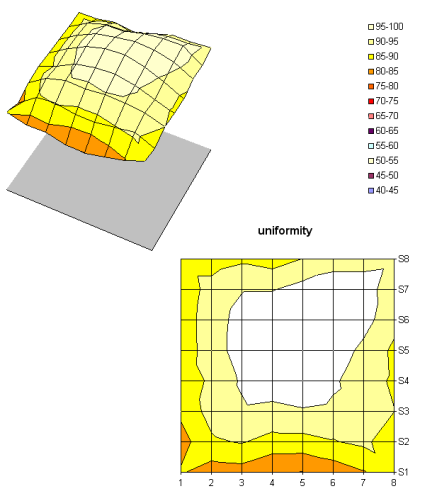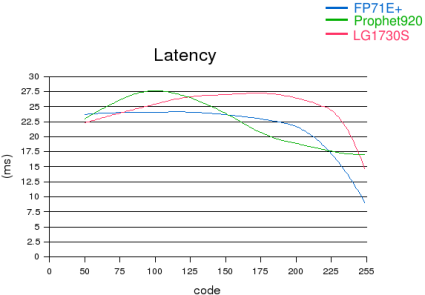The Good, the Bad and the Beautiful: 17" LCDs Reviewed
Spatial Uniformity
The results were barely any better for uniformity, unfortunately:
The monitor's overall uniformity was average. All the values were distributed over 20% of the range. The profile showed a slight left/right asymmetry, but it was really minor and didn't hamper use. The vertical luminance gradient, on the other hand, was much more of a problem. The lower part of the panel was noticeably darker than the upper part.
What About That 12 Ms?
This monitor sacrifices many important characteristics to boost the speed of its panel. Let's see if the tradeoff is worth it. The move to 12 ms hasn't always been a clear success for many manufacturers, with the latency profile sometimes being very far from the manufacturer's ISO specifications. And that's the case here:
The maximum latency recorded was lower than for our Hydis 20 ms panel. But the panel was slower than the Hydis over 60% of the use range. Does this mean this is a bad monitor? Not at all. The 1730S was a little faster than the 1720B - by four ms in rapid transitions. And the fall times were short, which doesn't show up on the graph. The human eye is more sensitive to bright objects on a black background than the other way around. Consequently, a short fall time means that white objects on a black background will leave less of a trail during rapid movement. Further, the 1730S is in a good price spot if you compare it to other heavyweights in the category (the Samsung 710T/N, for example). But let's be honest: The 1730S was a little short on overall performance and less responsive overall than the Hydis 20 ms panel.
Get Tom's Hardware's best news and in-depth reviews, straight to your inbox.

